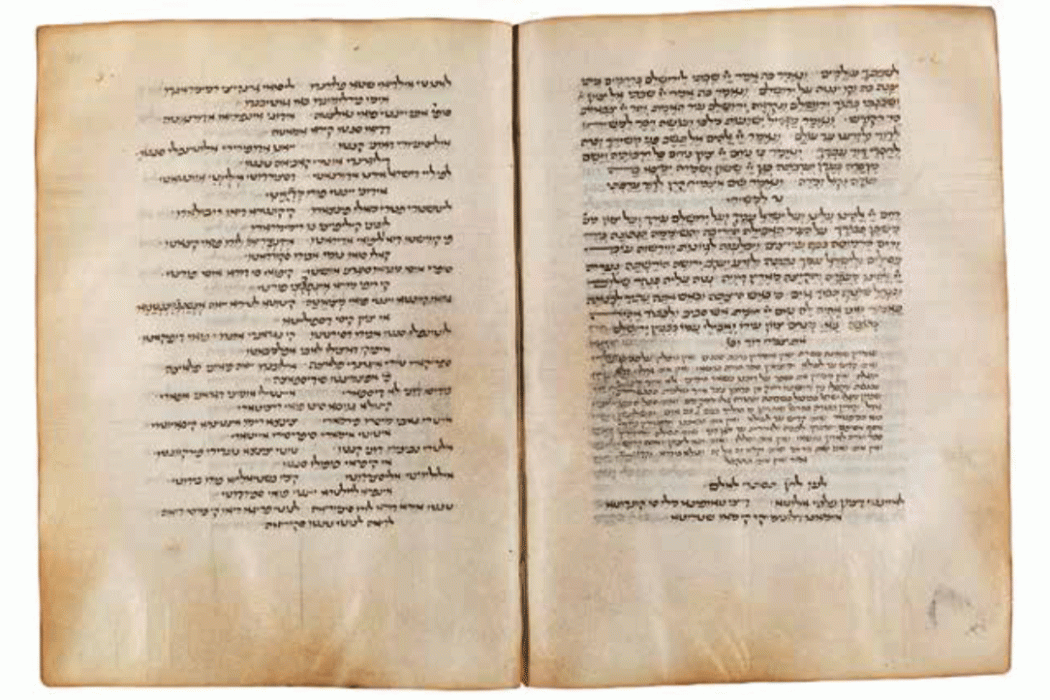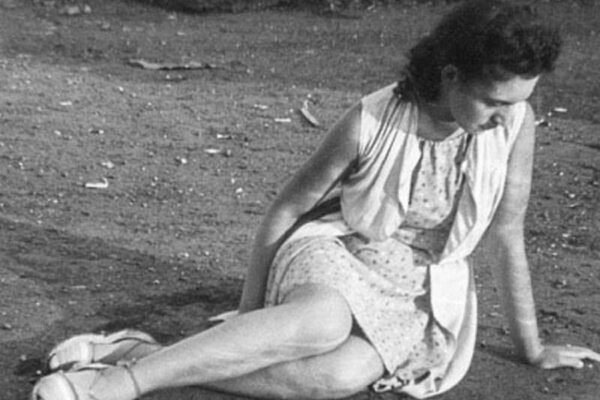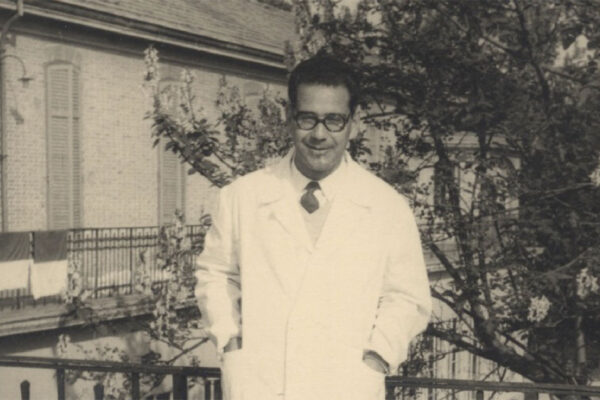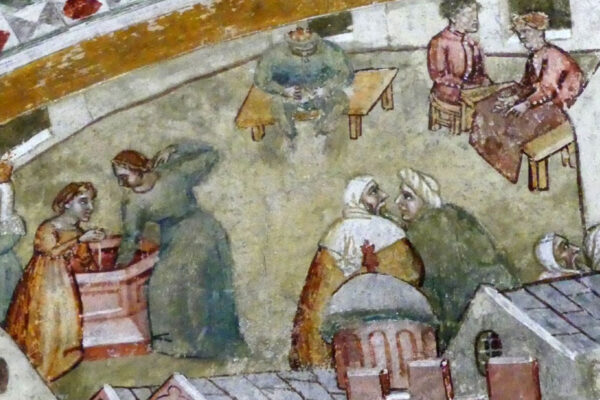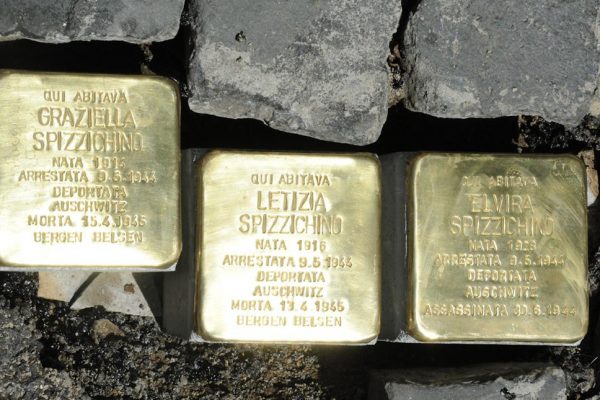La iente de Zion: a Medieval liturgical poem in Italian vernacular
From: Jews, an Italian Story. The First Thousand Years, Electa, 2018, Museo Nazionale dell'Ebraismo Italiano e della Shoah, Ferrara. Image: Parma, Biblioteca Palatina, Ms. 273 6 (prev. De Rossi 804) (Bibl.: Richler, Beit-Arié 2001, p. 214; Natale 2017). La iente de Zion is a Jewish liturgical poem composed for the observance of the fast of the 9th day of the month of Av (Tisha B’Av). It appears in two prayer books of the Roman rite compiled in the 14th and 15th centuries. It was probably written in the first half of the 13th century in vernacular typical of the central and southern areas of the Italian peninsula. Composed in Hebrew characters, it is considered one of the earliest examples of Judeo-Italian as well as vernacular literary compositions. Tisha B’Av commemorates the destruction of both Temples of Jerusalem. During different historical periods and especially in the Middle Ages, poets have composed lamentations (qinot) that were recited or sung as part of local liturgies throughout the world. It has also become customary to recite these quinot to commemorate other tragedies that have befallen the Jewish people, including the Holocaust. On the occasion of Giorno della Memoria 2022, the Italian Cultural Institute of New York presents a reading of La iente de Zion.
Jews have been using Italian vernacular uninterruptedly since the end of the 11th century. The holy language, used in the religious practice and in writings of various kinds—poetry, history, philosophy, and science, as well as for practical purposes (inscriptions, acts, etc.)—began to be gradually accompanied by spoken vernaculars, certainly not to an equal extent, but increasingly significant. In the earliest texts, the vernacular was used to aid the comprehension of words or expressions in Hebrew: this subsidiary function never disappeared completely, but with the passing of time the vernacular would gain autonomy and be used to compose original texts.
The relationship between Hebrew and the vernacular is comparable to that between vernacular and Latin in the Christian context where Latin was the primary language of religion, literature, science etc. Both Hebrew and Latin were not primary languages of any speaker. They were rather learned in educated circles. They were highly valued by those who did not know them or knew only their rudiments. Therefore, the appearance of the vernacular in cultural spaces, such as writing, previously the exclusive competence of ‘high’ languages, represents an important phenomenon, which would affect, at different times and in different ways, both the Jewish and the Christian populations.
Vernacular texts written by the Jews of Italy are called conventionally ‘Judaeo-Italian’: glosses and glossaries, based on original Hebrew (especially from Biblical sources), poetic compositions, sermons, grammar books, dictionaries, etc. They are often anonymous, which was not infrequent at the time, especially for some of the categories mentioned above. However, some authors are known and their cultural profiles can be traced: for example, Mosheh of Rieti (c. 1388–1465), physician and banker, wrote in Hebrew an encyclopedic poem, a commentary on the aphorisms of Hippocrates and an elegy for the death of his wife. In the vernacular, he composed a didactic work, Filosofia naturale e fatti di Dio1. Mordechay Dato (c. 1525–1592), a rabbi and preacher, was the author of a story of Ester in ottava rima, a Shabbat hymn and a collection of sermons all in vernacular, as well as various critical and cabalistic works and liturgical poems in Hebrew2.
The Judaeo-Italian textual corpus, going back for the most part to the 15th and 16th centuries, is quite rich and well-characterized from various view-points, at least regarding the medieval and Renaissance periods3. As was common for writings produced by and intended for the community, the texts are in Hebrew characters, which presents both advantages and disadvantages for scholars: on the one hand, we find minimal or non existent influence of the Latin graphic tradition whose tendency to etymologize may hide the underlying phonetics; on the other, there are equivocal letters, especially in the cases of palatal consonants and vowels. Moreover, the copyists often omitted punctuation, namely that system of diacritical marks written above, under or inside the Hebrew consonants, used to indicate the vowel timbre (e/i, o/u) and the pronunciation of some consonants (p/f, b/v, simple/double).
Therefore, the interpretation of Judaeo-Italian texts can be problematic from a graphical-phonetical perspective. The biblical and liturgical traditions adopted in general a hyper-literal technique, retracing precisely Hebrew syntax, while the vocabulary often appears archaic and unusual, drawing to a certain extent on a lexical thesaurus of diverse origins, formed over the course of the centuries and attested only or prevalently in a Jewish context4.
It must be emphasized that these texts—as those in Latin produced by Christians in the same regions and cities—do not directly reflect the language varieties spoken by the writers and/or their public, in this case the members of the Jewish communities who lived in various regions of the peninsula: they should rather be considered evidence of a written register or style, far from daily speech, rooted in an ancient and venerable tradition. As long as this tradition was perceived by Jews as a prestigious reference, it was used for all texts of a certain formal gravity. Thus most of these texts bear some resemblance, beyond the obvious differences due to geographical variations. This resemblance, almost a ‘family trait,’ is signaled both by lexical choices and in the common central-southern Italian substratum: all Judaeo-Italian texts share some linguistic traits distinctive of Southern and Central Italy. This is due to the fact that the most active medieval Italian Jewish cultural centers were in the South, and later in Rome.
There are threads of continuity between the texts belonging to this ancient tradition and the modern Judaeo-Italian dialects, documented from the 19th century in several cities (Rome, Venice, Ferrara, Mantua, Livorno, etc.), and have almost completely disappeared5. Such continuity is due to the fact that in the Modern Age the migratory flow from Rome and the Papal States brought with it not only spoken linguistic varieties—which must have had a central-Italian base—but also a written variety somehow canonized and oriented to the Judaeo-Roman reference system6.
One of the most representative texts of the Judaeo-Italian production is the elegy La iente de Zion, a kinah (lamentation) for the destruction of the Second Temple to be used in the liturgy: it is preserved in two machazorim (prayer books for the whole year) of the Roman rite, in the section relating to the 9th of Av, a day of mourning in the Jewish calendar. As indicated in the opening annotation lachan Tissater le-allem (‘on the theme of Tissater le-allem’), the text was sung on the melody of another kinah, therefore musically a contrafactum.
The two surviving copies—at least one more existed7— are from the 14th and 15th centuries: one, manuscript P, from the Biblioteca Palatina of Parma8, and manuscript F, from the Talmud Torah of Ferrara9. Of the two, only F is vocalized and, even if from a later time, is more useful than P for any phonetical reconstruction.
The poem is anonymous and consists of forty mono-rhyme tercets of verses with an unequal number of syllables (between nine and fourteen). The metric (each verse has four main accents) recalls the Hebrew poetical tradition, with which it has notable affinities also in its themes: the remembrance of the past glories of the people of Israel, the dramatic events after the destruction of the Temple and the plea to the Lord so that He may once again restore them to prosperity. These themes are recurrent in the repertory of the kinot and talmudic and midrashic sources. On a stylistic level, the elegy has affinity with of the 13th and 14th centuries religious (Christian) poetry of Central and Southern Italy. Notable is the popularizing effect obtained through the use of easy rhymes, repeated words, direct address to the public, exclamatory phrases and the abundance of artificial rhetoric—parallelisms, synonymic repetitions, chiasmus etc.
Published for the first time by its discoverer, Elia Samuele Artom (1913–1915), re-edited on a wider textual basis and with more certain philological tools by the great biblical scholar Umberto Cassuto (1929), the elegy has entered the canon of early Italian poetry thanks to Gianfranco Contini, who included it in his well-known anthology of 13th century poetry (1960). It can now be read in a new edition that restores the original central-southern linguistic flavor, greatly toned down by the previous editors10.
The Judaeo-Italian elegy (ed. Natale 2017)
(I)
La iente de Zion plagne e lutta,
dece: “Taupina, male so condutta,
e manu delo nemicu che m’ao štrutta”.
(II)
La notti ala die šte plorando
li soi grandizzi rememrando,
e mo pe lo mundu vao gattivandu.
(III)
Sopre onni ienti foi ’nalzata de’ onni emperio adornata da Deo santo ch’era amata;
(IV)
e li signori da ogni canto
gianu ad offeriri alo templo santo, delo granti onori c’avia tanto;
(V)
li figlie de Israel erano adornati de sicerdoti e liviti avantati
e d’onni ienti foro ’mediati;
(VI)
li noštri patri male pinzaru,
che contra Deo revillaru,
lu veni che li fici no rememraro;
(VII)
pi· quišto Deu li foi adirato
e d’emperiu loro foi cazzato,
ca lo soi nome abbero scordatu;
(VIII)
sopre isse mandao sì grandi ošti chi foi sì dura e ssì forti
che roppe mura e ’nfranzi porti.
(IX)
Guai, quanta ienti foi meciata,
che tutta la terra gia ensanguinentata. Oy, Zion, che si desfigliata!
(XXXIII)
Santo Dio noštro Signore, retorna arreto lo too forore
e no guardari a noi piccadori,
(XXXIV)
pe· lo too nomo santo e vinditto lo noštro core aiušta a dderitto, ché te sirvamo in fatto e ’n ditto;
(XXXV)
e rememra la prima amanza
e trai noi de quišta gattivanza, de quišta tenevri e scuranza,
(XXXVI)
e lo nemico ch’è tanto avantato nelo too furori sia deiettato,
da canto en canto deserdato,
(XXXVII)
e cetto fazza como ao fatto
e sia štrutto e ddesfatto,
ca fao rumpere la lige e lo patto,
(XXXVIII)
e derizza štradi ’n onni canto ad adunare en quillo santo quillo popolo ch’amašti tanto,
(XXXIX)
e lo santo templo ch’è deguaštato dela toa mano sia ’defecato,
lo too prufeta como ao profetato,
(XL)
leviti e secerdoti e tutta ienti entro Zion štare gaoiente,
lo santo toi nome venedicenti.
Paraphrase
(I) The people of Zion cry and mourn, / saying: ‘Oh poor us, we have fallen badly, / into the hand of the enemy that has destroyed us’. (II) day and night they keep cry- ing, / remembering their past greatness/ while now they wander the world in captivity. (III) Above all people they were elevated / and adorned by every empire, / so loved they were by holy God; (IV) and notables from every corner (of the kingdom) / went to lay offerings at the holy temple, / so much was it held in great honor; (V) The sons of Israel were adorned / praised by priests and Levites / and were envied by all people; (VI) Our fathers calculated badly, / rebelling against God / they did not remember the good that He done them; (VII) For this God became angry with them / and they were banished from their kingdom / because they had forgotten His name; (VIII) Over them He sent such a great army / that was so strong and hard / that it broke the wall and crushed the gates. (IX) Ah, how many people were killed / (so many) that the soil was soaked with blood / Oh, Zion, that You are bereft of Your children! [. . .] (XXXIII) Holy God, our father, / calm Your fury / and do not pay attention to us sinners, (XXXIV) in Your holy and blessed name / help our hearts to mend and straighten, / so that we can serve You in act and word; (XXXV) and re- member that first love (between You and us) / and rid us of this imprisonment / of this darkness and gloom, (XXXVI) and the enemy that is so high / in Your fury let him be thrown down / banished from every place, (XXXVII) and so do (to him) as he has done / let him be destroyed and undone / that he made us break the law and the pact, (XXXVIII) Straighten the roads (of the kingdom) / to assemble in the Temple / the people that You loved so much, (XXXIX) and Your holy temple that is destroyed / by Your hand let it be rebuilt, / as Your prophet has prophesied, (XL) Levites and priests and all the people / in Zion can rejoice and be happy / blessing Your holy name.
Notes
- Hijmans Hijmans-Tromp 1989; Guetta 2002.
- Tamani 1986; Hijmans-Tromp 1992.
- Ferretti Cuomo 1983; Moriggi 2008; Aprile 2010; Rubin 2015; Debenedetti Stow 2016.
- Sermoneta 1974 and 1994; Ferretti Cuomo 1977 and 1998; Ryzhik 2010.
- Mayer Modena 1997; Aprile 2012; Ryzhik 2014.
- Mancini 1992.
- An 18th century unbound sheet manuscript was lost.
- Ms. 2736, formerly De Rossi 804.
- Currently in a private collection.
- Natale 2017.


